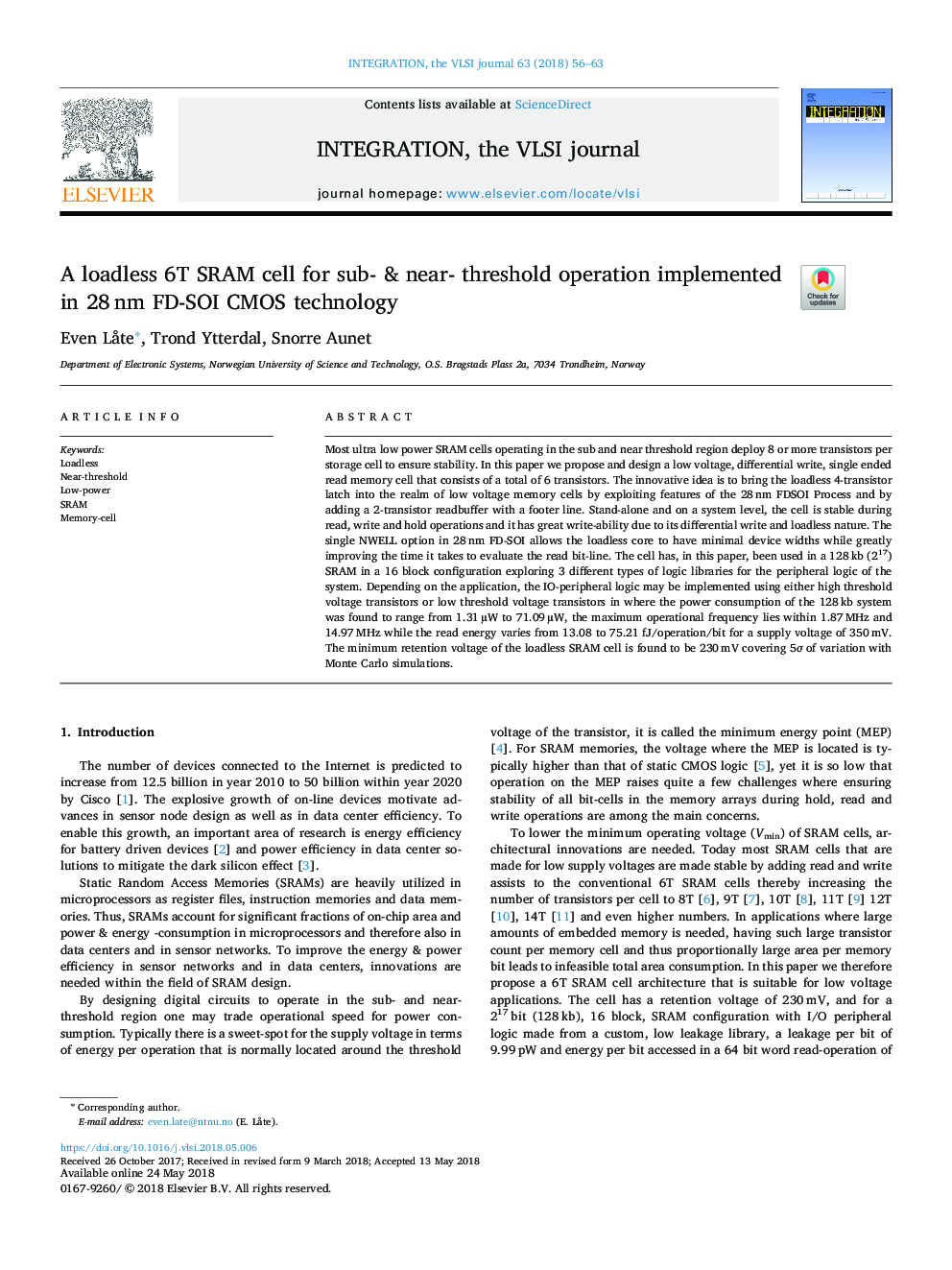| Article ID | Journal | Published Year | Pages | File Type |
|---|---|---|---|---|
| 11020917 | Integration, the VLSI Journal | 2018 | 8 Pages |
Abstract
Most ultra low power SRAM cells operating in the sub and near threshold region deploy 8 or more transistors per storage cell to ensure stability. In this paper we propose and design a low voltage, differential write, single ended read memory cell that consists of a total of 6 transistors. The innovative idea is to bring the loadless 4-transistor latch into the realm of low voltage memory cells by exploiting features of the 28â¯nm FDSOI Process and by adding a 2-transistor readbuffer with a footer line. Stand-alone and on a system level, the cell is stable during read, write and hold operations and it has great write-ability due to its differential write and loadless nature. The single NWELL option in 28â¯nm FD-SOI allows the loadless core to have minimal device widths while greatly improving the time it takes to evaluate the read bit-line. The cell has, in this paper, been used in a 128â¯kb (217) SRAM in a 16 block configuration exploring 3 different types of logic libraries for the peripheral logic of the system. Depending on the application, the IO-peripheral logic may be implemented using either high threshold voltage transistors or low threshold voltage transistors in where the power consumption of the 128â¯kb system was found to range from 1.31â¯ÂµW to 71.09â¯ÂµW, the maximum operational frequency lies within 1.87â¯MHz and 14.97â¯MHz while the read energy varies from 13.08 to 75.21 fJ/operation/bit for a supply voltage of 350â¯mV. The minimum retention voltage of the loadless SRAM cell is found to be 230â¯mV covering 5Ï of variation with Monte Carlo simulations.
Keywords
Related Topics
Physical Sciences and Engineering
Computer Science
Hardware and Architecture
Authors
Even LÃ¥te, Trond Ytterdal, Snorre Aunet,
